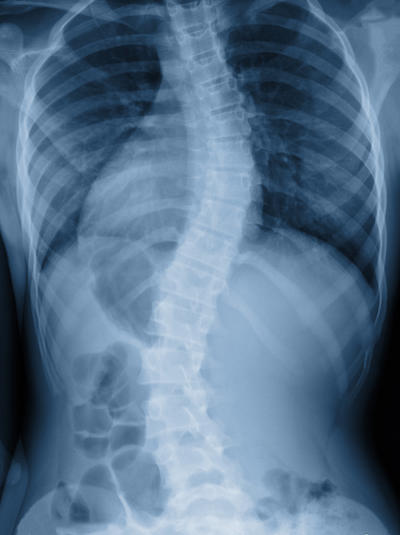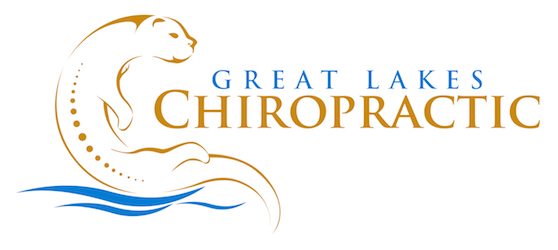
Health-E-News April 2017
empowering you to optimal health
How Chiropractic Care Can Slow Down Adolescent Idiopathic Scoliosis (AIS) Progression
Adolescent Idiopathic Scoliosis can be associated with headaches, breathing and pain throughout the body including back, neck, hip and knee pain. If you suffer from any or multiple of these scoliosis related symptoms, chiropractic care can help.
 About 1-3% of children between the ages of 10-16 are affected by AIS. It is usually defined as a lateral curve of the spine that is bigger than 10 degrees, as well as rotation of the vertebra. While a typical spine will represent a straight line, those with scoliosis can expect to see more of an “S” or “C” shape in an x-ray. While there is no definitive cause for scoliosis, many factors including bone abnormality at birth, abnormal muscles or nerves can play a role in idiopathic scoliosis.
About 1-3% of children between the ages of 10-16 are affected by AIS. It is usually defined as a lateral curve of the spine that is bigger than 10 degrees, as well as rotation of the vertebra. While a typical spine will represent a straight line, those with scoliosis can expect to see more of an “S” or “C” shape in an x-ray. While there is no definitive cause for scoliosis, many factors including bone abnormality at birth, abnormal muscles or nerves can play a role in idiopathic scoliosis.
A 21 year old female went to see the chiropractor for the first time and complained of back pain. She noted that walking or standing more than an hour increased her pain and when asked about the site of pain, she pointed to her lower thoracic and upper lumbar spine regions.
She was advised to begin chiropractic care 3 times a week for the first 3 months, then 2 times a week for the following 3 months. Her treatment plan consisted of adjustments, traction and exercise in order to reduce the forward head posture, and essentially improve the lateral curvatures in her spine.
After her first 3 months of care, her thermal scan showed improvements and her pain scale reduce from the initial 4/10 to 0/10. Her results showed a reduction in progression of structural and postural changes of her spine. Overall, her physical pain, postural, structural and quality of life was improved after just a few months of chiropractic care.
Nektalov, B. (2012, March 22). Improvement in a Patient with Scoliosis Undergoing Chiropractic Care: A Case Study. Maternal & Family Health, 31-37.
If you suffer from symptoms associated with scoliosis, know that there are numerous studies that display that there are benefits of chiropractic care to help those who suffer from scoliosis.
Chiropractic Care Can Resolve Neck Pain and Headaches in People with Dandy Walker Syndrome
Dandy Walker Syndrome (DWS) is a rare group of brain malformations that happen during birth. If you or anyone you know suffers from any or multiple symptoms that could be a result of DWS, chiropractic care can help.
DWS involves the cerebellum, which controls movement. Therefore, the symptoms that commonly affect patients include slow motor development, enlargement of the skull, irritability, vomiting and convulsions.
A 13 year old female went to see the chiropractor for the first time and complained of right sided headaches, neck pain and low back discomfort. Her history showed that she had been diagnosed with DWS since birth and has a device in order to drain excess fluid that causes swelling of the brain. Over the last 6 months, she had been experiencing neck pain, headaches around the area that the device was placed.
On her first visit, she received adjustments to address the joint dysfunction and subluxations detected and 2 days later at her next visit, it was revealed that she had not experienced headaches or neck pain since beginning care. To address her low back pain, she was taught exercises and was instructed to perform them at home. Following these instructions, the patient reported that her back pain had subsided.
The implementation of the treatment plan on this adolescent with DWS was able to reduce the patient’s headache, neck pain and low back discomfort and ultimately improve the patient’s quality of life.
Maroon, S., Floyd, R., Varnum, C., & Alcantara, J. (2014, June 13). Resolution of Neck Pain and Headaches in a 13 year old Female with Dandy Walker Syndrome & Vertebral Subluxations. Maternal & Family Health, 30-36.
What does Type 2 diabetes have to do with my spine?
Insulin is a hormone that is responsible for storing energy in the body in the form of glycogen. This is accomplished by the absorption of glucose from the bloodstream, which is then converted and stored in fat, muscle, and liver cells. When insulin activity is disrupted, the likely culprit is Diabetes mellitus (DM).
DM may be separated into three categories: Type 1 Diabetes Mellitus (T1DM), Type 2 Diabetes Mellitus (T2DM), and Gestational Diabetes Mellitus (GDM). T1DM causes an individual’s immune system to attack insulin-producing cells and is thus considered an auto-immune disorder. Patients with T1DM tend to be very young and require daily insulin injections in order to survive. Alternatively, T2DM is seen in adults and involves insulin resistance. It affects approximately 17 million people in the United States and can be managed through proper diet and exercise. Finally, GD is glucose intolerance that affects about 2-4% of pregnant women per year.
A 67-year-old female suffering from T2DM, hypertension, and kidney failure sought the help of a chiropractor with the intention of improving her overall health and quality of life after experiencing great dissatisfaction with other medical interventions. Some symptoms she experienced prior to chiropractic care included: headaches, digestive issues, musculoskeletal pain, and discomfort.
The chiropractic exam identified cervical, thoracic, lumbar, and pelvic range of motion loss and subsequent presence of subluxations in the same regions.
The patient was seen three times a week for four weeks. Visits involved spinal adjustments, physical rehabilitation, lumbar and cervical exercises, and the use of a wobble chair. The treatment duration exceeded the four-week recommendation and reached a total of 33 visits over a 3-month period.
Post-treatment results included the following: termination of several of the 92 pills she was prescribed including her insulin pills to make for a new total of 21 pills, her glucose levels reached normal range, occurrence and severity of spasms decreased, head posture improved, thoracic and lumbar subluxations improved, and general pain and discomfort improved as well.
T2DM is a growing global health issue and although current interventions have been proven to help manage this condition, alternative treatment options should be considered. Referring to the case study discussed above, chiropractic care is proving to be a likely competitor. More specifically, the patient was able to achieve normal glucose levels that were monitored using glucose level testing throughout her treatment, which resulted in the termination of her insulin pills. With a personally prescribed treatment plan, the patient was able to experience several benefits that improved her overall health in addition to the resolution of her T2DM, which ultimately improved her quality of life.
Yachter, D., & Jarry, M. (2015). Resolution of Type 2 diabetes Mellitus in a 67 Year old Female Patient following subluxation-based chiropractic care: A case study. Annals of Vertebral Subluxation Research. Retrieved from: http://www.mccoypress.net/annals/docs/2015-1369_diabetes.pdf
How to Keep Your Body Young As You Age
Aging is inevitable but having your body grow weary as it ages doesn’t have to be the case. There are natural ways to keep your body feeling and looking young despite aging, and it doesn’t require botox or plastic surgery to make it happen.
While you can always make visits to the gym a priority to keep your body looking and feeling youthful, there are even simpler decisions you can make on a daily basis to keep your body young. Take a look at these ways that you can keep yourself young as you age through mental, emotional, and physical care.
Drinking green tea
If you’re used to drinking coffee throughout the day for your caffeine fix and a hot beverage to warm you up, consider making the switch to green tea on occasion. Green tea has mega health benefits and one of those benefits is keeping your mind sharp and your weight more manageable.
As you age, you’ll have to deal with a foggier memory and less mental clarity than in your younger days. You’ll also notice a slowdown of the metabolism. Fight these signs of aging by incorporating green tea in your daily routine to help with your weight and keeping your brain sharp.
Incorporate more fats in your diet and cut the sugar
While you may be used to seeing “low fat” or “no fat” on products in the grocery store, these are actually replacing fats with more sugar. Excessive sugar is horrible for your body and all too common of a problem these days. It’s hard to avoid sugar and it’s hard to realize that fats are good for you, as long as they are healthy fats.
Look at your diet to see how much sugar you are getting because this is likely harming your body and aging you faster than normal. Remove the empty calories of sugar to stop stressing your body and choose foods with actual nutritional value. Choose more omega-3 fatty acids instead, to reduce the visible effects of aging and to keep your bones nice and strong.
Physical, mental, and emotional tips
 What else can you do that will keep you young outside of changing your diet? This is where you need to look at your physical, emotional, and mental habits. Are you receiving chiropractic care on a regular basis? Even mental aerobics will help you maintain your youthful body.
What else can you do that will keep you young outside of changing your diet? This is where you need to look at your physical, emotional, and mental habits. Are you receiving chiropractic care on a regular basis? Even mental aerobics will help you maintain your youthful body.
Start going to the chiropractor to increase your vitality and improve your overall balance and movement as you age, and you’ll likely notice that those regular adjustments make a big difference. Make it a weekly habit to do a crossword or Sudoku puzzle to keep your mind sharp. When it comes to your emotional health, nothing will keep you young like falling in love will, so don’t be afraid to delve into your passions like a favorite hobby or volunteer work.
Using these tips, your body will be able to maintain its youthfulness to the best of its ability despite the inevitability of aging!
